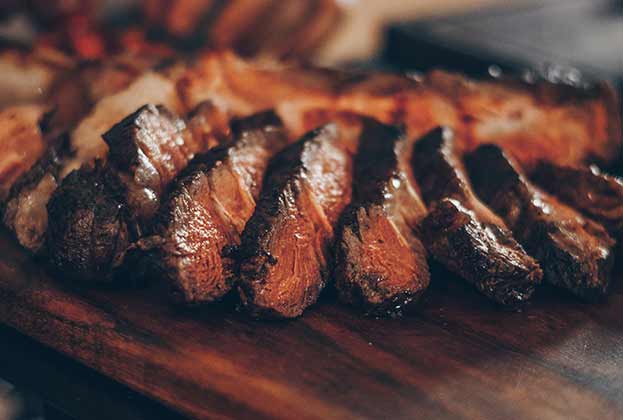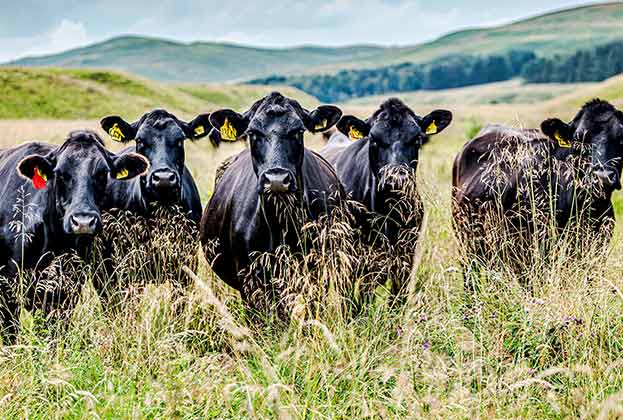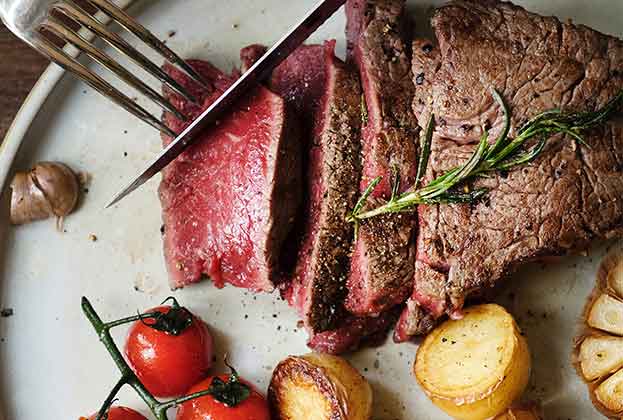The livestock sector in the UK is uniquely positioned to make use of otherwise unproductive land
With the UK committed to achieve net zero greenhouse gas emissions by 2050 and land use uniquely offering the potential to sequester carbon, agriculture’s future is being shaped by this ambition. Emissions accountability is coming to all sectors and farmers should be actively looking at ways they can contribute.
The 2050 commitment is based upon the recommendations of the Committee on Climate Change. In 2020 the Committee released an updated land use policies report that recommended significant land use change to achieve the necessary levels of climate change mitigation and adaptation.
Under its plan 4.6 million hectares of UK land needs to be released and repurposed. This major structural change would involve reducing the arable area by 30% and the area of grassland by 11%. It is suggested that the released area could be used for more trees, environmental adaptation (peatland bogs, rewilding) and energy crops to achieve net zero on a national scale.
UK producers are well positioned to adopt a lower input, more extensive approach to rearing and finishing ruminant animals, which encourages regenerative agricultural practices
Savills Rural Research
Despite this scale of land use change, food production from the UK is expected to be maintained, and globally it needs to increase. The UK remains one of the most sustainable places in the world for agricultural production, livestock included. Rich soils, favourable climatic conditions and topography lead to efficient and reliable agricultural production even under a variety of future climate-related environmental changes. Furthermore, around 65% of UK farmland is only suitable for growing pasture. Utilising these large areas of upland and hillside land for productive livestock grazing limits the spread of aggressive and undesirable vegetation that otherwise possess limited or no alternative value or benefits to biodiversity. Proposed policy changes and the repackaging of subsidy to focus more on environmental benefits suggests adopting sustainable livestock and environmental management practices will pay dividends.
.jpg)
Decreasing the carbon hoof-print
Practical steps to reducing greenhouse gas emissions of ruminant herds
- Low-input, high-output production units
Increasing reproductive rates and survivability together with higher carcass weights achieves greater output per breeder unit while reducing energy intensive (and expensive) inputs. A ewe rearing twin lambs doubles output and for virtually the same environmental footprint.
- Methane inhibition
Early trials with seaweed added into rations indicate a methane emissions reduction of up to 85% in sheep and 50% in dairy cattle. A Swiss company expects to release a methane inhibitor feed additive within the next five years. Genetics could also play a role as the level of methane an animal emits is in part an inherited trait. Through selective breeding techniques lower emitting animals could be bred within a few generations.
- Fertiliser Consider
nutrient cycling that mirrors a circular farming model as a substitute for energy intense artificial fertilisers. Adding sulphuric acid to slurry reduces the GHG emissions and increases nutrient value of the substrate. For those requiring artificial inputs, a shift to targeted fertiliser application with controlled release capabilities may be the way forward.
- Grazing management
Maintaining ground cover is essential for pasture health and longevity. It maximises carbon sequestration potential and ensures a rapid growth response following cell and rotational grazing patterns.
- Data informed management
‘You can’t manage, what you don’t measure.’ A baseline measurement now will inform what effective change looks like. There is unlikely to be an industry standard carbon tool, so work with supply chains on their requirements or use a consistent methodology for self-evaluation. Natural capital assessments and nitrate loadings are other examples of where to start.
UK producers are well positioned to adopt a lower input, more extensive approach to rearing and finishing ruminant animals, which encourages regenerative agricultural practices. Balancing a productive business unit with a mantra of regenerative agriculture is of mutual benefit to sustainable food production and increasing diversity of plant, animal, insect and tree species. Livestock production plays an essential part in providing balance to the whole ecosystem.
A diverse combination of land use changes together with appropriately managed and grazed grasslands and a carefully considered reduction in herd size can reach a domestic net zero target and still provide a valuable, nutritious food source.
.jpg)
Irish farmers are set to be paid to capture carbon in their permanent pasture as part of the country’s plan to achieve net zero by 2050. The carbon sequestration potential of well managed pastures is estimated between 0.3t CO2/ha and 0.9t CO2/ha per annum depending on management practices, and with carbon prices expected to reach €80/t in Ireland by 2030, the scheme could be worth anywhere between €100 million and €300 million across some 4.1 million hectares of grassland.
Read the other articles within Spotlight: Red Meat Outlook below
.jpg)

.jpg)


